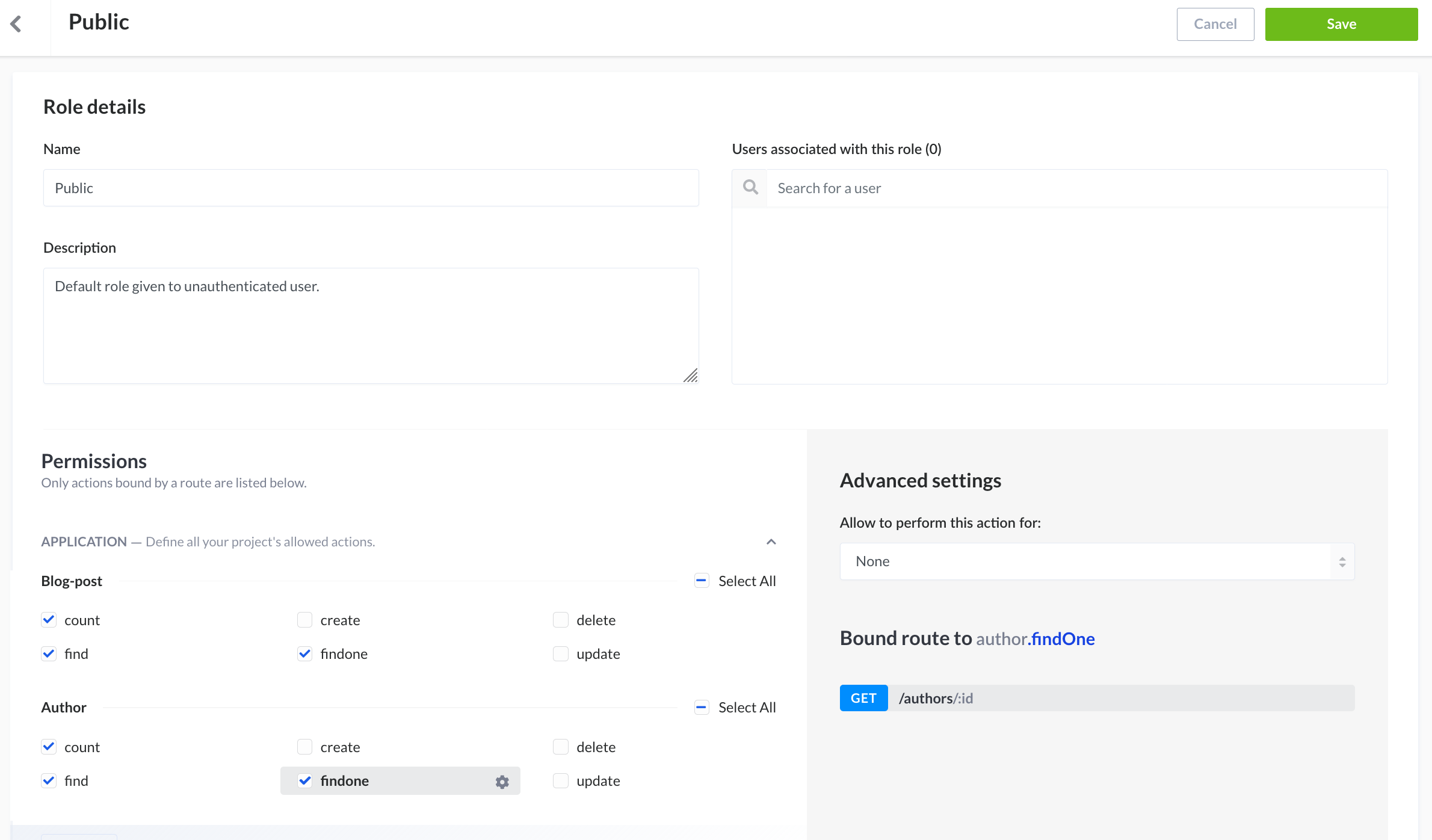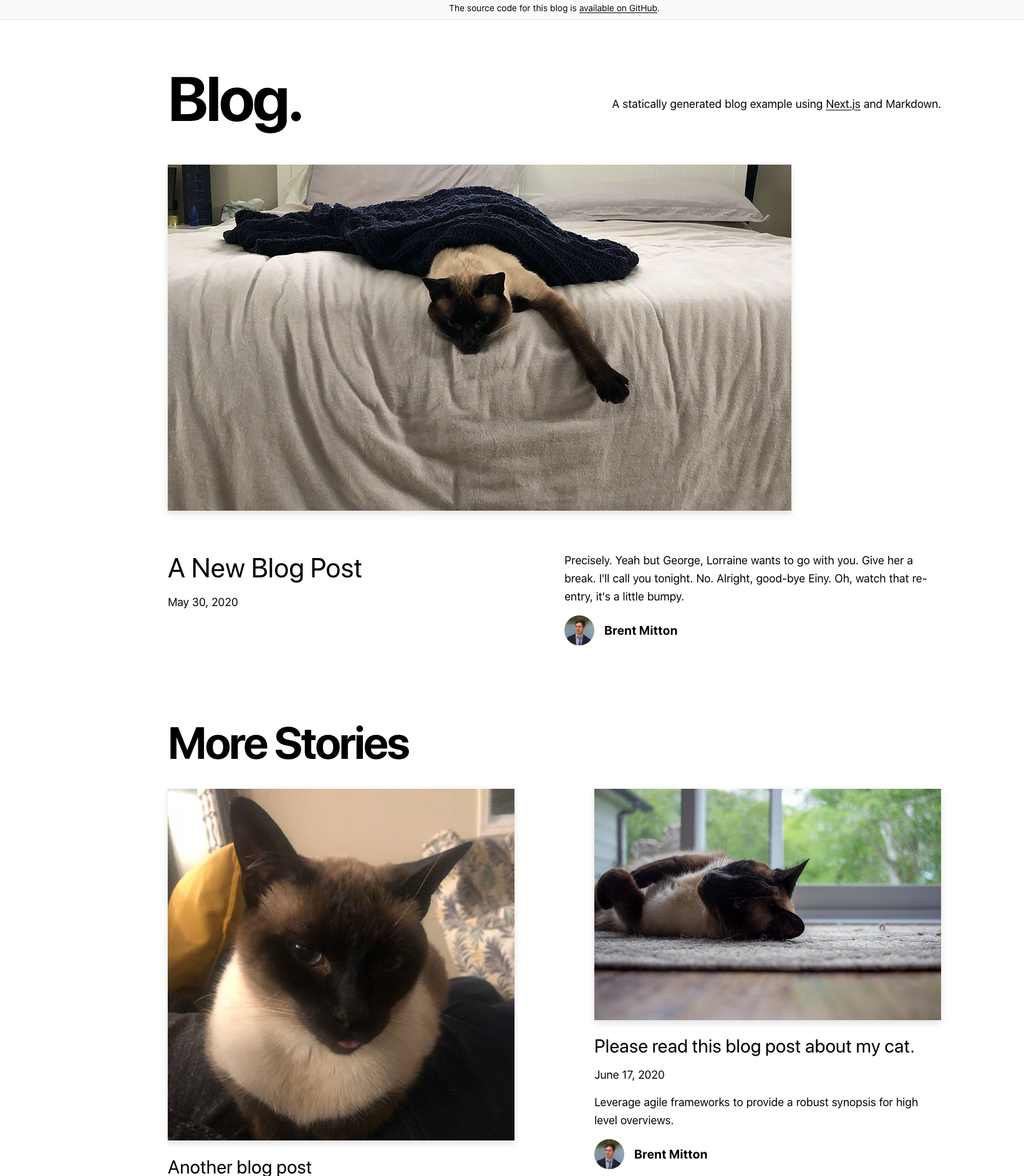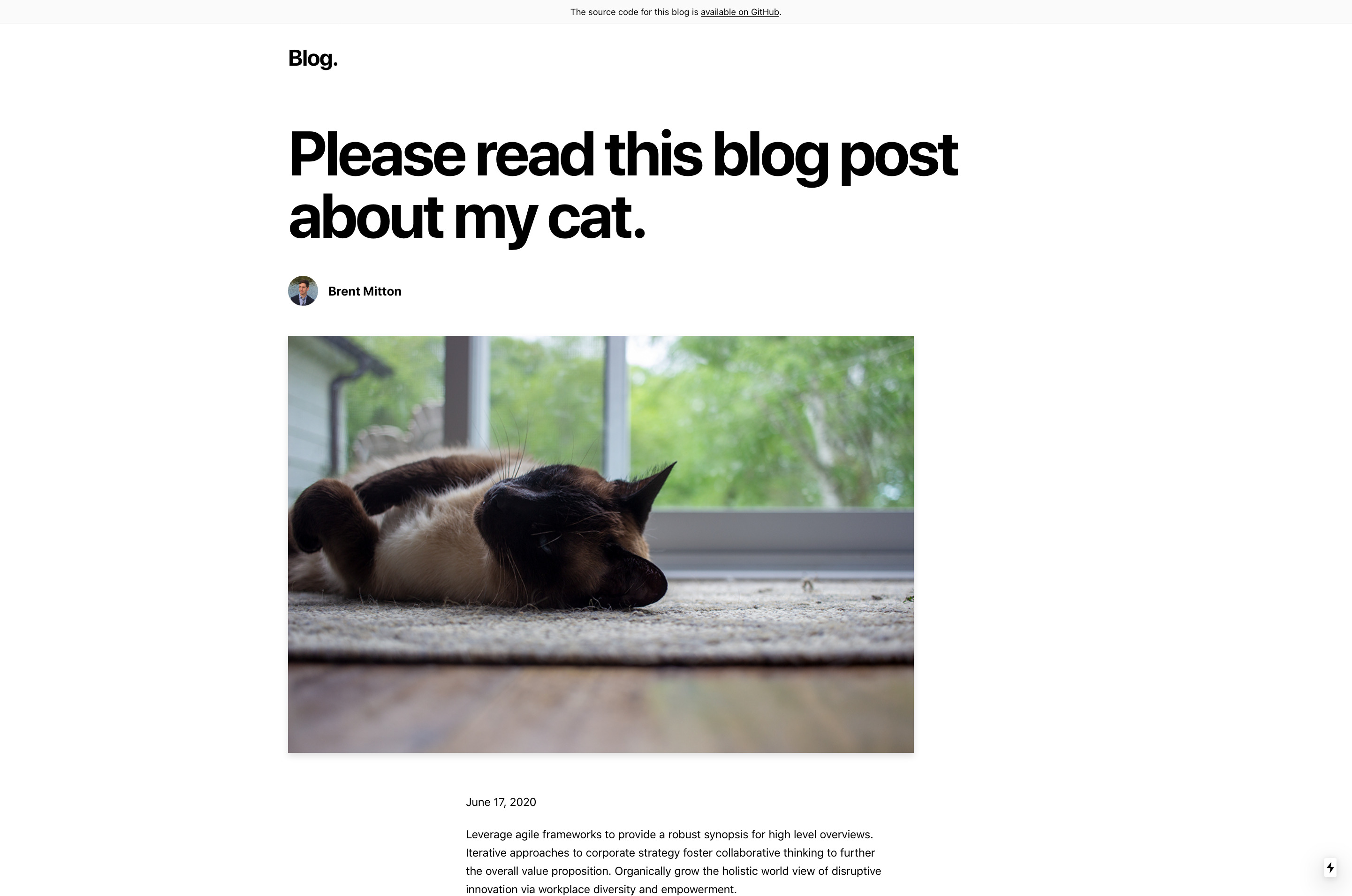Querying Strapi
We're ready to start pulling the data from Strapi instead of the filesystem. To do this we'll be writing GraphQL queries and sending them to Strapi in our getStaticProps methods.
Adjusting Strapi permissions
By default, you won't be able to access any data from Strapi without authentication. For our purposes, let's give unauthenticated users read access to our two content types.
Head back to Strapi and click on Roles & Permissions in the sidebar. Click into the Public role. On this page, we can adjust our permissions for the Author and Blog Post types. Give the public access to count, find, and findone then click the Save button..

Get index page data
Now that we have permissions let's modify getStaticProps to query the GraphQL endpoint.
pages/index.js
import { fetchGraphql } from 'react-tinacms-strapi'
//...
export async function getStaticProps() {
const postResults = await fetchGraphql(
process.env.STRAPI_URL,
`
query{
blogPosts {
title
date
slug
author {
name
picture {
url
}
}
excerpt
coverImage {
url
}
}
}
`
)
return {
props: { allPosts: postResults.data.blogPosts },
}
}We're no longer using the getAllPosts function that the starter provided for us. So we can remove the import.
- import { getAllPosts } from '../lib/api'Each of the items that I'm querying is used to preview a blog post on the homepage. This almost works how we want it to, but there is one exception in how we need to deal with images.
In the Next.js example, images are hosted locally, and the coverImage field is a string that points to the relative location of the picture. In our Strapi example, coverImage is an object with a url property. Additionally, the API only returns a relative location, so we need to add on the URL of our Strapi server to fully resolve our images.
pages/index.js
<HeroPost
title={heroPost.title}
- coverImage={heroPost.coverImage}
+ coverImage={process.env.STRAPI_URL + heroPost.coverImage.url}
date={heroPost.date}
author={heroPost.author}
slug={heroPost.slug}
excerpt={heroPost.excerpt}
/>components/hero-post.js
<div>
<p className="text-lg leading-relaxed mb-4">{excerpt}</p>
<Avatar
name={author.name}
- picture={author.picture}
+ picture={process.env.STRAPI_URL + author.picture.url}
/>
</div>components/more-stories.js
{posts.map((post) => (
<PostPreview
key={post.slug}
title={post.title}
- coverImage={post.coverImage}
+ coverImage={process.env.STRAPI_URL + post.coverImage.url}
date={post.date}
author={post.author}
slug={post.slug}
excerpt={post.excerpt}
/>
}components/post-preview.js
<Avatar
name={author.name}
- picture={author.picture}
+ picture={process.env.STRAPI_URL + author.picture.url}
/>Refresh the index page and see the blog posts you created in Strapi!

If you try to navigate to any blog post, you'll be met with a 404. Head over to pages/posts/[slug].js and we'll get the blog post pages working.
Pull blog posts from Strapi
We'll be making changes to getStaticProps to load the contents of the blog post that we're trying to view. We'll also make changes to getStaticPaths so that when we click on a blog post we are able to resolve it based on the slug.
pages/posts/[slug].js
import { fetchGraphql } from 'react-tinacms-strapi'
// ...
export async function getStaticProps({ params }) {
const postResults = await fetchGraphql(
process.env.STRAPI_URL,
`
query{
blogPosts(where: {slug: "${params.slug}"}){
id
title
date
slug
content
author {
name
picture {
url
}
}
coverImage {
url
}
}
}
`
)
const post = postResults.data.blogPosts[0]
const content = await markdownToHtml(post.content || '')
return {
props: {
post: {
...post,
content,
},
},
}
}
export async function getStaticPaths() {
const postResults = await fetchGraphql(
process.env.STRAPI_URL,
`
query{
blogPosts{
slug
}
}
`
)
return {
paths: postResults.data.blogPosts.map(post => {
return {
params: {
slug: post.slug,
},
}
}),
fallback: false,
}
}Again, remove the unneeded functions that the starter gave us.
- import { getAllPosts, getPostBySlug } from "../../lib/api";There are a few more image paths we'll need to update if we expect things to work after making this change.
pages/posts/[slug].js
<Head>
<title>
{post.title} | Next.js Blog Example with {CMS_NAME}
</title>
- <meta property="og:image" content={post.ogImage.url} />
+ <meta property="og:image" content={process.env.STRAPI_URL + post.coverImage.url} />
</Head>
<PostHeader
title={post.title}
- coverImage={post.coverImage}
+ coverImage={process.env.STRAPI_URL + post.coverImage.url}
date={post.date}
author={post.author}
/>components/post-header.js
<div className="hidden md:block md:mb-12">
- <Avatar name={author.name} picture={author.picture} />
+ <Avatar name={author.name} picture={process.env.STRAPI_URL + author.picture.url} />
</div>
<div className="mb-8 md:mb-16 -mx-5 sm:mx-0">
<CoverImage title={title} src={coverImage} />
</div>
<div className="max-w-2xl mx-auto">
<div className="block md:hidden mb-6">
- <Avatar name={author.name} picture={author.picture} />
+ <Avatar name={author.name} picture={process.env.STRAPI_URL + author.picture.url} />
</div>
<div className="mb-6 text-lg">
<DateFormater dateString={date} />
</div>
</div>We should now be able to load our Strapi blog posts based on their slug. Trying refreshing your site and click around to make sure everything is working.

Next, we'll be adding Tina's slick editing experience to our blog posts.